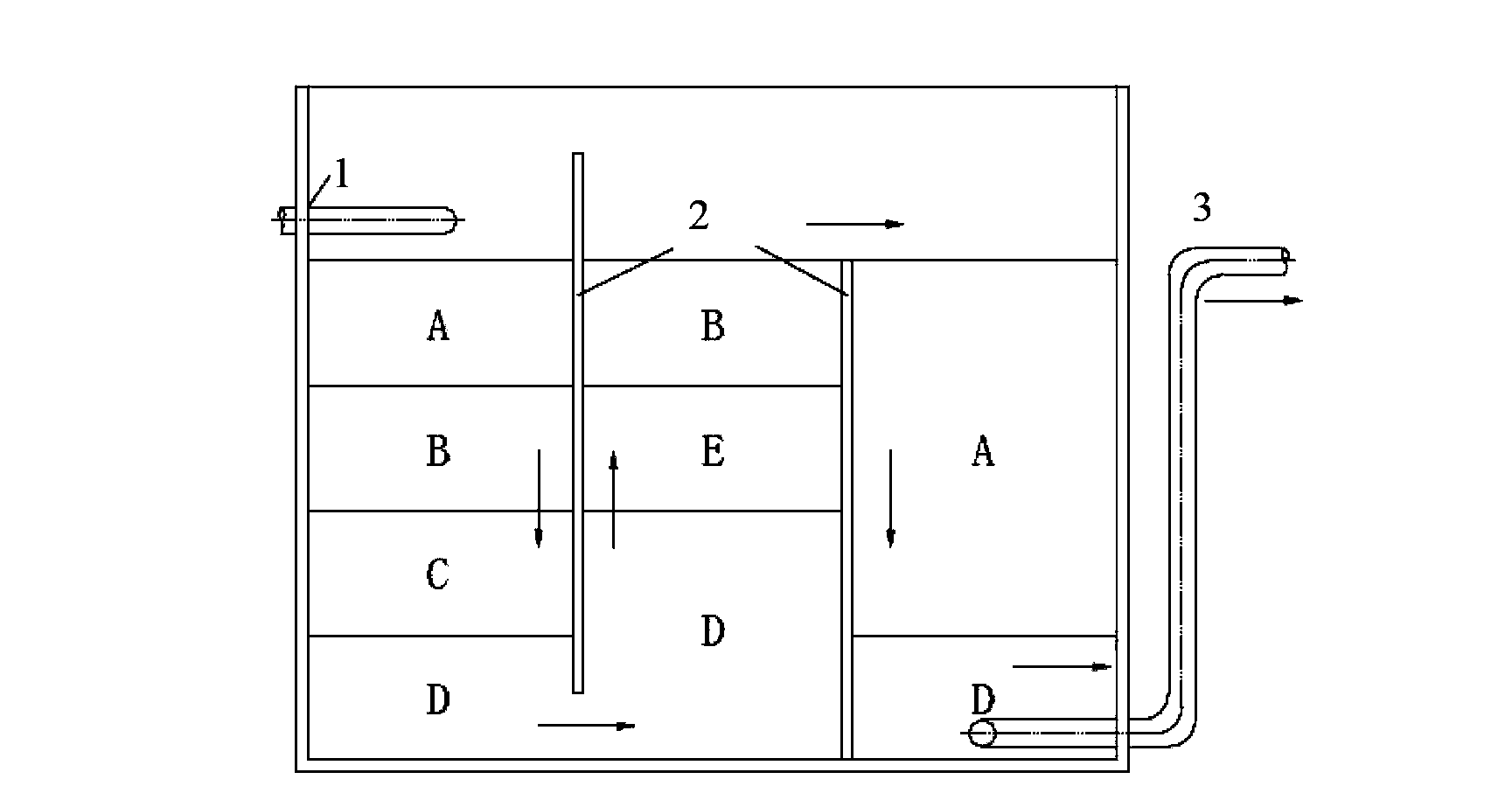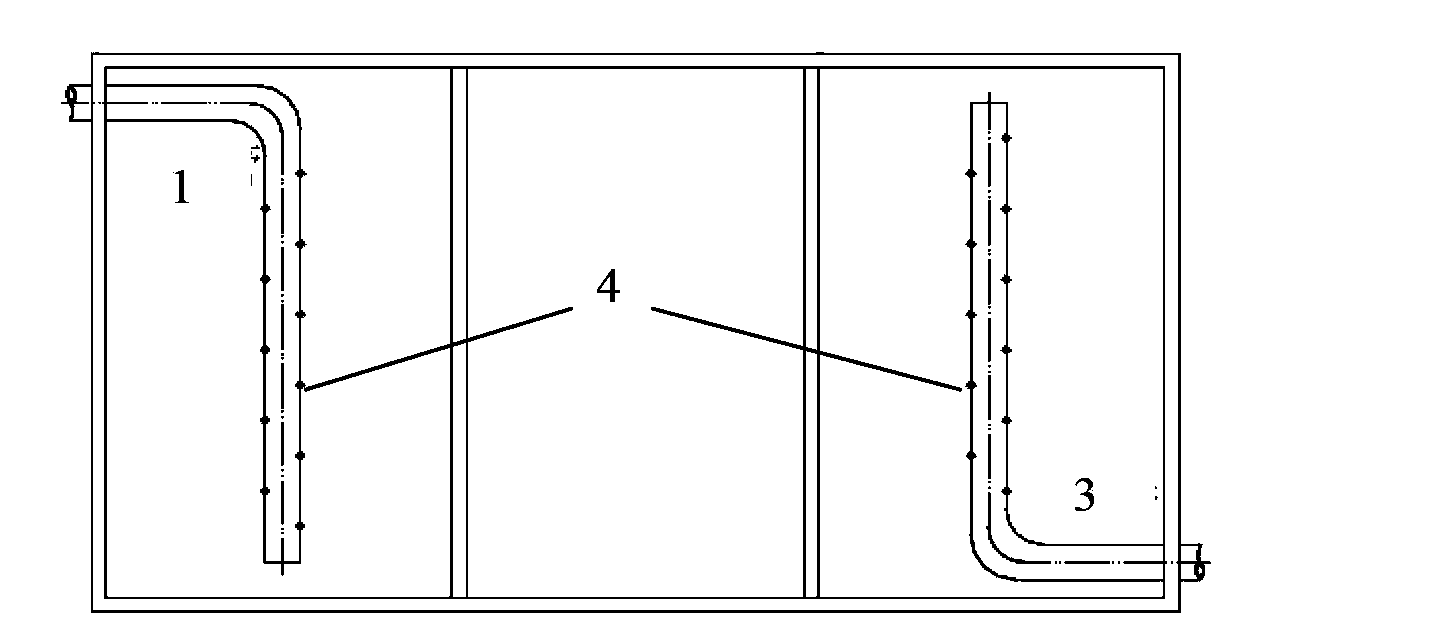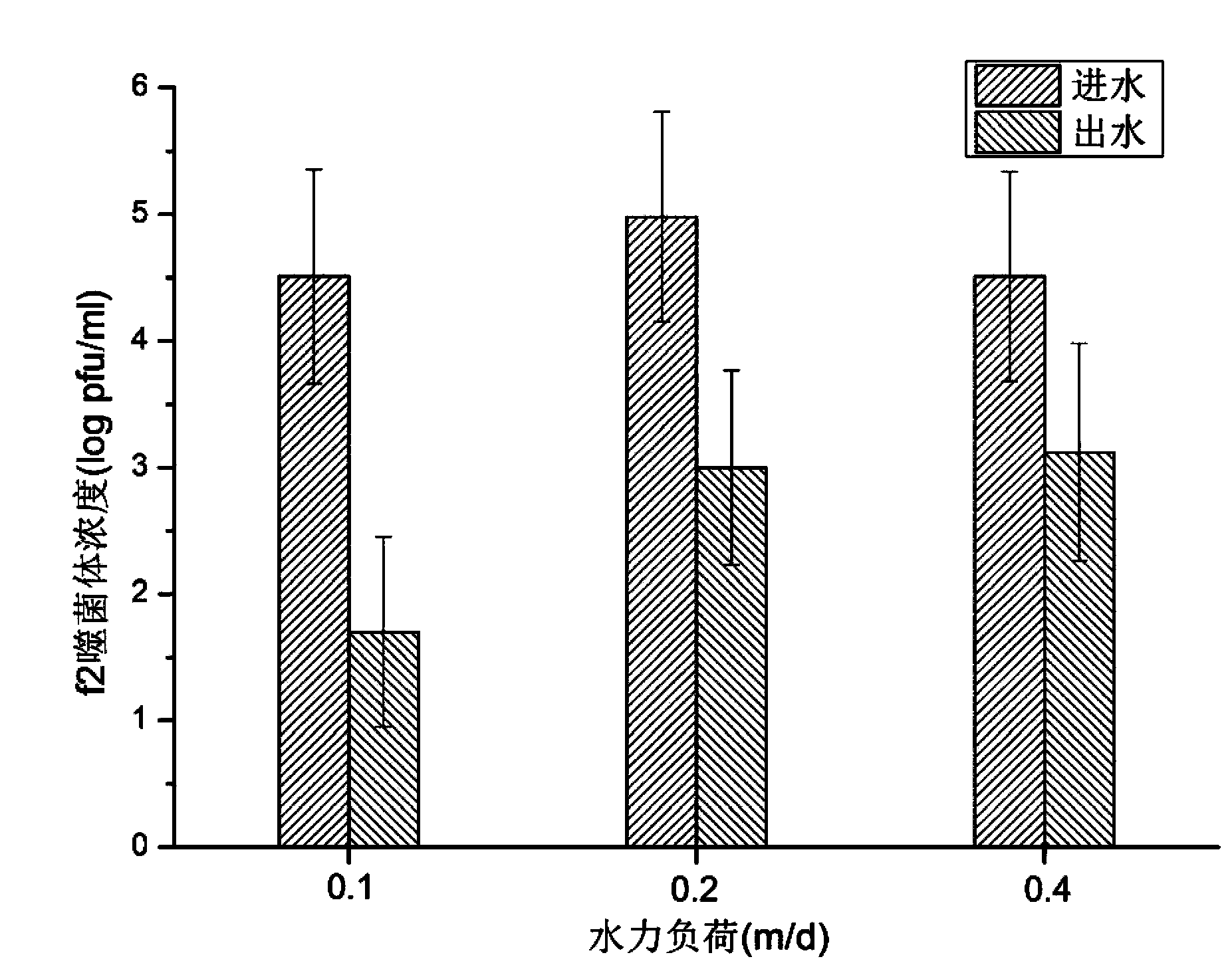Constructed wetland system for removing pathogenic microorganism in water
A technology of constructed wetland system and pathogenic microorganisms, applied in sustainable biological treatment, biological water/sewage treatment, water/sludge/sewage treatment, etc. Reduce the risk of pathogenic microorganism contamination, good purification effect, and efficient removal effect
- Summary
- Abstract
- Description
- Claims
- Application Information
AI Technical Summary
Problems solved by technology
Method used
Image
Examples
Embodiment 1
[0030] See figure 1 and figure 2 . The artificial wetland system used in the test, which can efficiently remove pathogenic microorganisms in water, is a container made of PVC board, with a size specification of 0.6mx0.5mx0.3m (length x width x height). Two PVC partitions are used in the container The constructed wetland bed is divided into 3 units, and the length of each unit is 0.2m. There is a waterway through which water flows between the first partition 2 and the bottom of the constructed wetland bed, the top of the second partition 2 is lower than the top of the first partition, and the bottom of the second partition is in contact with the artificial wetland bed. The bottom of the wetland bed is connected; a water inlet pipe 1 is arranged above the artificial wetland bed of the first unit separated by the first partition along the water inlet direction, and openings 4 are evenly opened on the water inlet pipe for distributing water (such as figure 2 shown), at the b...
Embodiment 2
[0037] The constructed wetland system used in the test, which can efficiently remove pathogenic microorganisms in water, is basically the same as in Example 1, except that the volume ratio of zeolite filled in the first unit: anthracite: steel slag: volcanic rock is 1:2:1: 1; the volcanic rock that is tiled and filled in the second unit: forsterite: the volume ratio of anthracite is 1:1:1; the zeolite that is tiled and filled in the third unit: the volume ratio of volcanic rock is 4:1.
[0038] Using the above-mentioned constructed wetland system capable of efficiently removing pathogenic microorganisms in water, a continuous operation test for the removal of pathogenic microorganisms was also carried out on the secondary biochemical effluent of the sewage plant in Example 1, and the results were the same as in Example 1.
[0039] The continuous operation test of the removal of organic pollutants and nitrogen and phosphorus nutrients in Example 1 was carried out simultaneously...
PUM
| Property | Measurement | Unit |
|---|---|---|
| particle diameter | aaaaa | aaaaa |
| particle diameter | aaaaa | aaaaa |
| particle diameter | aaaaa | aaaaa |
Abstract
Description
Claims
Application Information
 Login to View More
Login to View More - R&D
- Intellectual Property
- Life Sciences
- Materials
- Tech Scout
- Unparalleled Data Quality
- Higher Quality Content
- 60% Fewer Hallucinations
Browse by: Latest US Patents, China's latest patents, Technical Efficacy Thesaurus, Application Domain, Technology Topic, Popular Technical Reports.
© 2025 PatSnap. All rights reserved.Legal|Privacy policy|Modern Slavery Act Transparency Statement|Sitemap|About US| Contact US: help@patsnap.com



